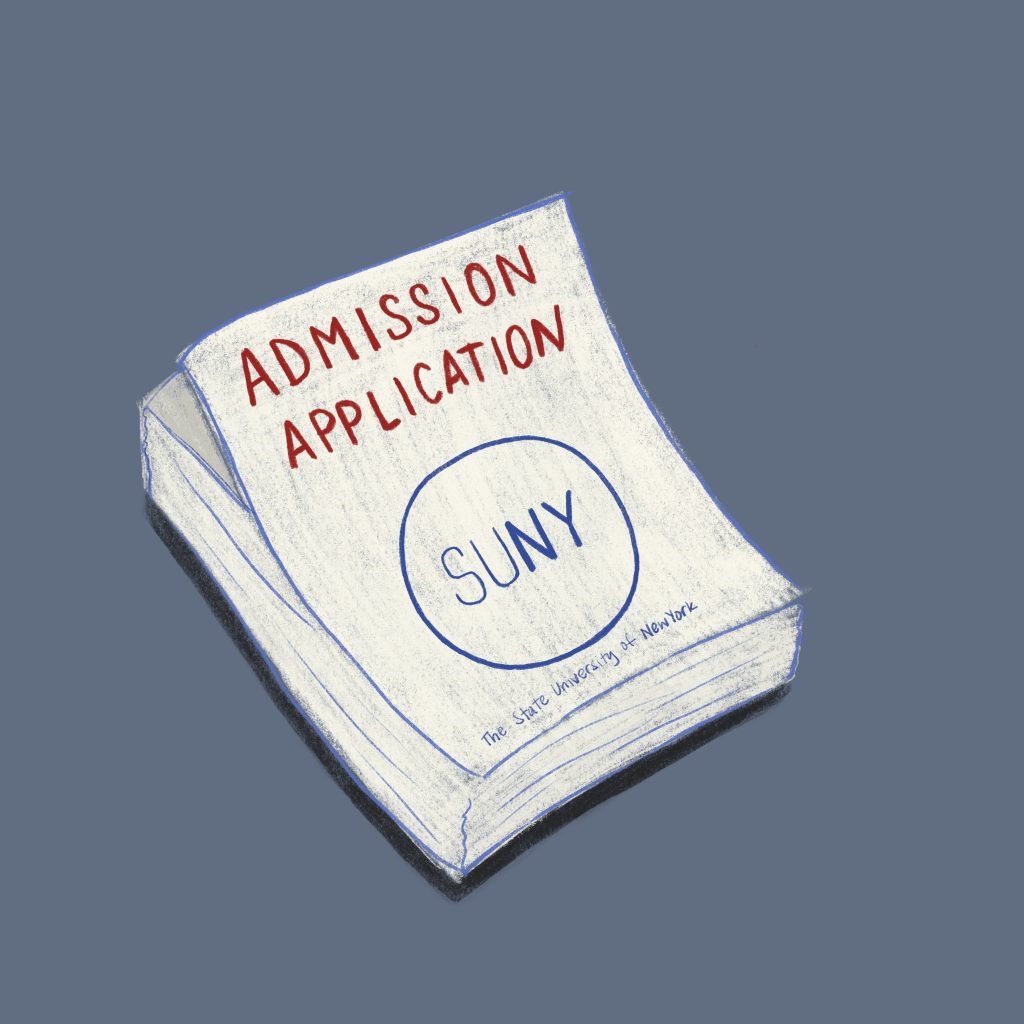SUNY has recently seen a “historic growth” in applications.
This fall, SUNY launched a two-week no-fee application process open to any students interested in applying. On Oct. 25 SUNY had dropped the fee across all 64 colleges, leading to potential savings adding up to $250 per applicant, according to the SUNY website. Since launching this initiative, there has been at least a 110 percent increase in applications reported for the fall 2023 cycle.
Joel Wincowski, deputy to the chancellor for enrollment at SUNY, said such initiatives allow for SUNY to diversify its enrollment.
“The increase in applications has far exceeded our expectations,” Wincowski wrote in an email. “It is a testament to the high-quality education for which SUNY is known, with some of the best faculty, staff and campus communities in the nation. This increase is only the beginning of an upward trend we expect in enrollment across our campuses.”
The purpose of these initiatives is to encourage students to apply by making the college application process more accessible, so as many students as possible can pursue a college education without barriers, according to SUNY. Since the implementation of these programs, the number of applications to SUNY schools has doubled from last year, increasing from 97,257 to 204,437, according to a SUNY press release.
Krista Medionte-Phillips, director of undergraduate admissions at Binghamton University, expressed her belief that the increase in applications proves how dedicated the SUNY system is to providing “opportunity and access” to students.
“Too often, students might only apply to one or two SUNY institutions and might not be admitted to one that works for them,” Medionte-Phillips wrote in an email.”By providing five free applications, SUNY makes it easier for students to explore more options. This is excellent for students and the SUNY institutions with room for more students. [BU] received over 42,000 undergraduate applications last year, and while we do expect that number to increase, final enrollment numbers are dependent on a variety of factors.”
Many students can recall paying college application fees in high school. Brandon Sham, a freshman majoring in mechanical engineering, said he had been surprised to find out he had to pay $50 for each application.
“Because of the fees it kind of made me want to be more careful about which schools I chose to apply to, this forced me to limit myself to just a few of my select colleges,” Sham said. “If I had the opportunity to have the fee waived for five colleges then I wouldn’t be worried about the price and I would focus less on the total cost of everything. I would apply to countless schools in hopes of increasing my options and my chances of getting into the best possible school.”
Jacob Yoo, a sophomore majoring in psychology, said removing application fees can present equality in college admissions, describing the fees as a “costly burden.”
“I have a lot of friends back home in their last year of high school wanting to apply to a multitude of colleges but are unable to because of the cost,” Yoo said. “Having the fee waived is great and can definitely benefit a lot of people. It’s sad to see that lower-income students aren’t able to apply to as many colleges as they would like. Hopefully in the future, college application fees will be reduced or eliminated.”



